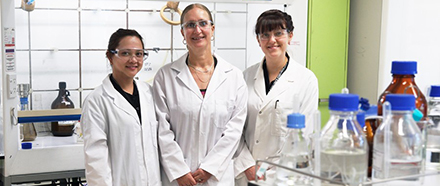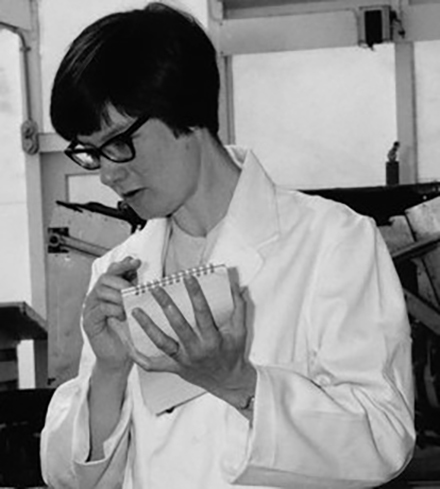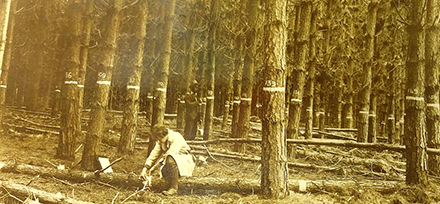When the United Nations first officially recognised International Women’s Day in 1977, Ruth Gadgil had already been making an impact in forestry for about a decade. More than 45 years later, her research is still a valuable resource. Source: Timberbiz
Today, March 8, marks International Women’s Day. It was first observed in the United States in 1909 and in 1977 the United Nations proclaimed a Day for Women’s Rights and International Peace be observed. It is now celebrated in many countries and recognises women and their achievements. This year, the theme is ‘Invest in women: Accelerate progress’.
It’s an opportunity to look back and acknowledge women like Ruth and the impact they continue to have.
Scion has been home to many female pioneers during its history, including as Forest Research Institute.
Mary Sutherland was the first female forester in New Zealand, the Commonwealth and possibly the world. She graduated in 1916 from the University College of North Wales, Bangor and worked for the Forest Service from 1925.
Rotorua Library held a talk about Mary Sutherland this week, hosted by Viv Edwards, the author of A Path Through the Trees, a book about Ms Sutherland’s life. Display boards focused on her life were also on show last month.
Ruth Gadgil joined the Forest Service in the 1960s. She died in May last year, but her pioneering work around nitrogen-fixing plants is still being cited and having an impact.
An upcoming publication in the NZ Journal of Forestry Science cites Ms Gadgil multiple times. Establishing indigenous forests portfolio leader Simeon Smaill, who is an author on the paper, says her work has been invaluable.
During the ‘70s and beyond, Ms Gadgil was one of few people extensively studying nitrogen-fixing plants and coastal dune stabilisation.
“She was a pioneer as a female scientist in this sphere,” Smaill says. “Now, all of a sudden, it’s critically important to understand nitrogen-fixation (the biological process by which nitrogen is taken from the atmosphere and converted into nitrogen compounds useful for biochemical processes).
“Without the work she had done, we would be 30 years behind.”
Smaill says the work has not only been useful today, but it will continue to be so. Adding nitrogen to a plant system without relying on mineral fertiliser, could be a “significant opportunity” for sustainable management of productive forests and Ms Gadgil’s research has provided a strong and critical knowledge base for this.
The paper citing Ms Gadgil’s work is written by lead author Nicki Reid along with Kathryn Walker, Aysha Nusrath, Simeon Smaill and Loretta Garrett.
Ms Garrett says Ms Gadgil’s work was critical to the paper: “She did a brilliant job as a researcher and the paper we have would be very light without her contribution.”
Ms Gadgil was also profiled in a 1997 book, The Characters of FRI edited by Ken Klitscher.
According to the book, she wrote of wanting to be a naturalist at age eight in 1944. She studied zoology and botany and gained a PhD by 1960 before marrying, moving to New Zealand and starting work at the Forest Research Institute as a nursery forewoman in 1966. Her work to understand the nitrogen cycle was internationally recognised.
“Ruth has never sought the limelight, but in some ways, she was a pioneer,” the book says.
She was made a female scientist when there were only few and worked part-time from 1970 while balancing a family.
Women are under-represented at all levels of science, technology, engineering and mathematics (STEM) disciplines worldwide. According to the latest UNESCO Science Report, less than 30% of the world’s researchers are women. In the New Zealand forestry sector, that number is 18%.
As of January, about 49% of Scion’s 380 employees were women including 113 science technicians and 71 scientists. Women hold some of Scion’s most senior leadership roles including general managers, on the Board of Directors, and portfolio and research group leaders.
The future is bright and secure in the hands of scientists like senior lab technician Anna de Lena, Bio/Organic Chemistry team lead Beatrix Theobald and bioprocess engineer Carla Cronje.

Scion senior lab technician Anna de Lena, Bio:Organic Chemistry team lead Beatrix Theobald and bioprocess engineer Carla Cronje.
The trio spoke about their experiences as women in science to mark International Day of Women and Girls in Science on February 11. Their messages of why women are valuable at the science table are also valid today.
You can see a history of Mary Sutherland at https://youtu.be/4FkMHTsZ-7g







